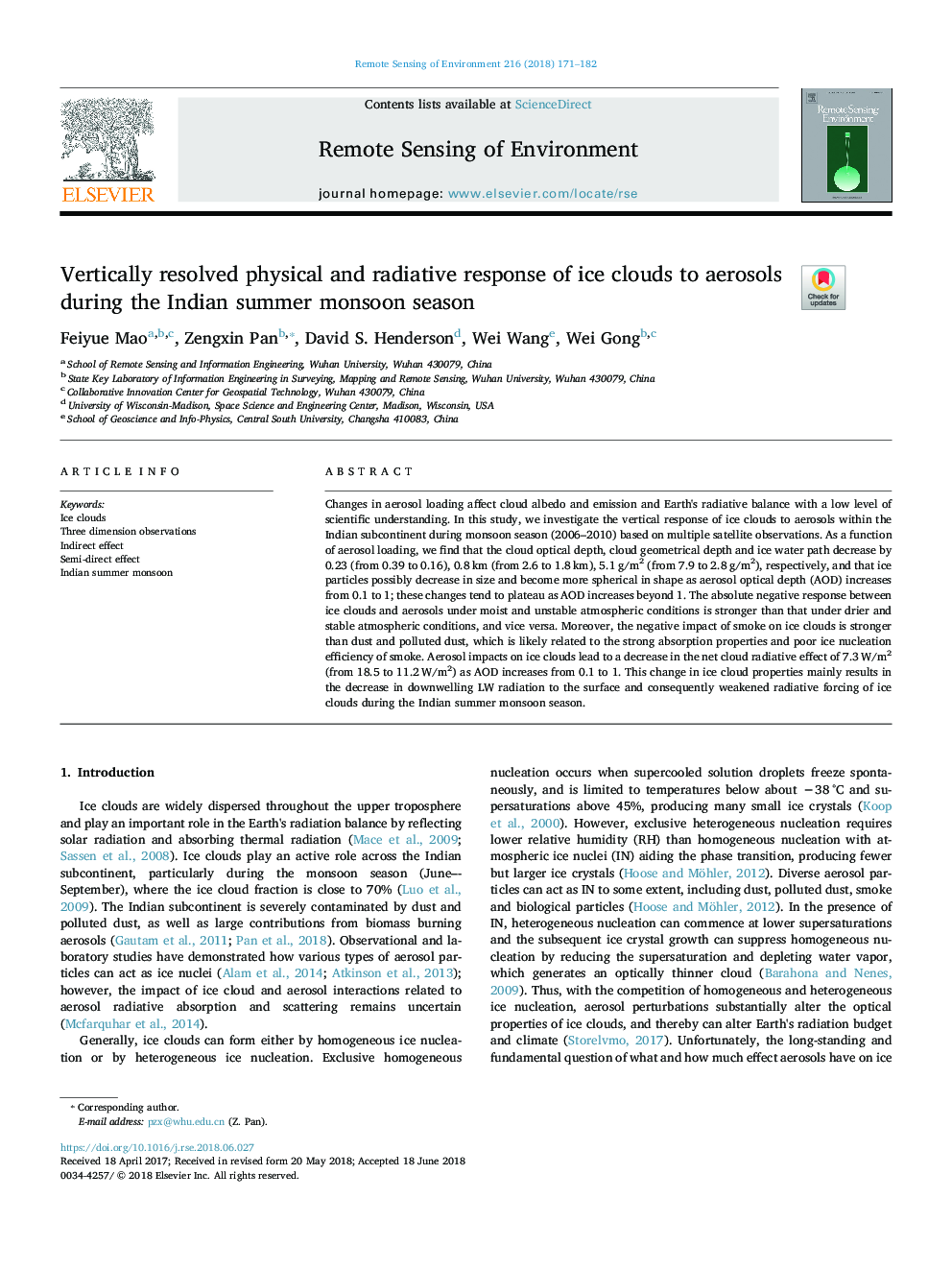| Article ID | Journal | Published Year | Pages | File Type |
|---|---|---|---|---|
| 8866409 | Remote Sensing of Environment | 2018 | 12 Pages |
Abstract
Changes in aerosol loading affect cloud albedo and emission and Earth's radiative balance with a low level of scientific understanding. In this study, we investigate the vertical response of ice clouds to aerosols within the Indian subcontinent during monsoon season (2006-2010) based on multiple satellite observations. As a function of aerosol loading, we find that the cloud optical depth, cloud geometrical depth and ice water path decrease by 0.23 (from 0.39 to 0.16), 0.8â¯km (from 2.6 to 1.8â¯km), 5.1â¯g/m2 (from 7.9 to 2.8â¯g/m2), respectively, and that ice particles possibly decrease in size and become more spherical in shape as aerosol optical depth (AOD) increases from 0.1 to 1; these changes tend to plateau as AOD increases beyond 1. The absolute negative response between ice clouds and aerosols under moist and unstable atmospheric conditions is stronger than that under drier and stable atmospheric conditions, and vice versa. Moreover, the negative impact of smoke on ice clouds is stronger than dust and polluted dust, which is likely related to the strong absorption properties and poor ice nucleation efficiency of smoke. Aerosol impacts on ice clouds lead to a decrease in the net cloud radiative effect of 7.3â¯W/m2 (from 18.5 to 11.2â¯W/m2) as AOD increases from 0.1 to 1. This change in ice cloud properties mainly results in the decrease in downwelling LW radiation to the surface and consequently weakened radiative forcing of ice clouds during the Indian summer monsoon season.
Related Topics
Physical Sciences and Engineering
Earth and Planetary Sciences
Computers in Earth Sciences
Authors
Feiyue Mao, Zengxin Pan, David S. Henderson, Wei Wang, Wei Gong,
